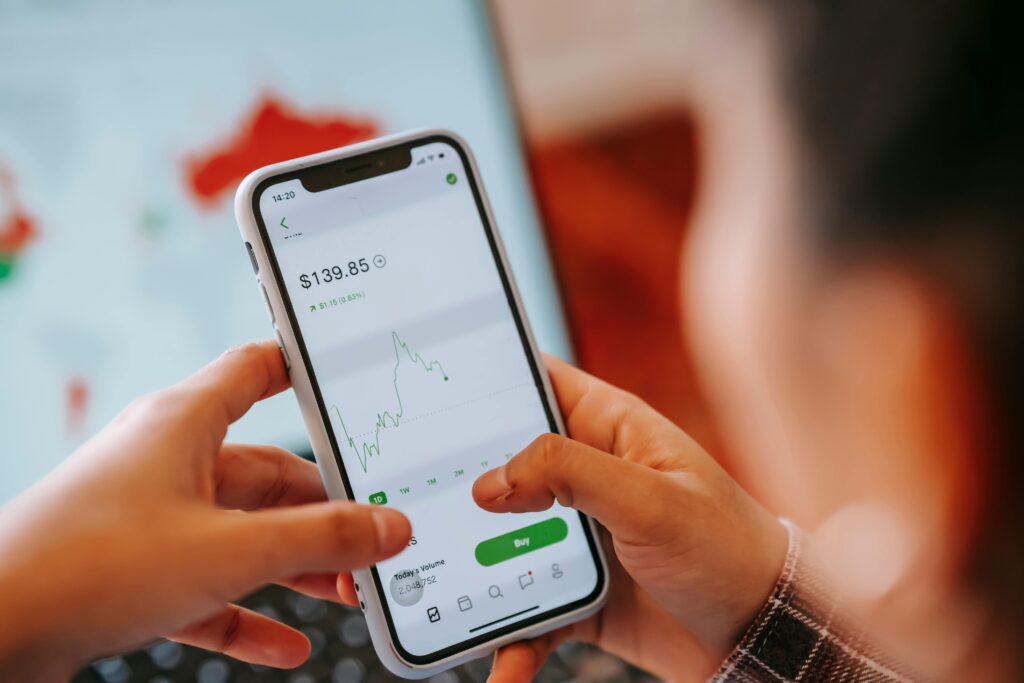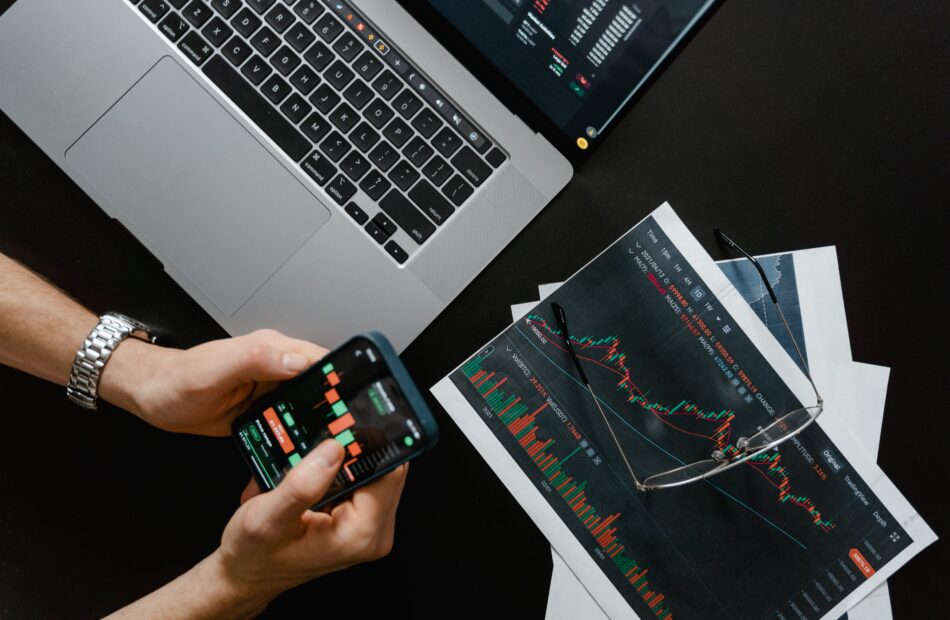Technical Analysis Tools and Indicators
Understanding Moving Averages in Cryptocurrency Trading

Moving averages are fundamental tools used in cryptocurrency trading to help traders understand price trends and make informed decisions. They create a smooth line that tracks the average price of an asset over a specific time frame. Traders mostly rely on the simple moving average (SMA) and the exponential moving average (EMA) to analyze market conditions.
The SMA calculation is straightforward; it sums up the closing prices of an asset over a specific period (e.g., 10 days) and divides it by the number of periods. This value produces a single average price, marking a point on the chart. As new data arrives, the oldest data point is dropped, and the newest one is added, each iteration recalculating the SMA anew.
On the other hand, EMA assigns more significance to recent price data compared to older data points. To calculate EMA, one first determines a multiplier based on the chosen time period. The multiplier decays the further back in time we go, reflecting reduced relevance of older prices. By utilizing this multiplier, each period’s EMA value depends not only on the close price but also on its previous EMA value.
In trading, moving averages are primarily applied for trend identification and signaling potential reversal points. Depending on trading strategies, traders look for the crossing of two moving averages or examine whether price action is above or below a moving average trend line.
Traders often watch for two key signals: a bullish crossover occurs when a shorter-term moving average crosses above a longer-term one, suggesting potential upward momentum in prices. Conversely, if a shorter-term moving average crosses below a longer-term one, this bearish crossover indicates possible downward momentum.
Another use of moving averages is as support and resistance levels. When prices fall towards a rising moving average and bounce back without breaking it, this typically signifies support. On the other hand, if prices rally towards a declining moving average and fail to surpass it, it usually acts as a resistance level.
Some traders combine multiple moving averages of different lengths to gain deeper insight into market trends. Understanding moving averages requires learning about different time frames, analyzing price behavior, and adjusting strategies accordingly.
It’s important to note that moving averages are lagging indicators, which means they may not reflect sudden price changes or market volatility. They are best used in combination with other technical analysis tools and indicators to increase effectiveness and accuracy.
Ultimately, comprehending moving averages is crucial for traders as it enables them to identify potential trends, determine support and resistance levels, and make more informed decisions when buying or selling cryptocurrencies.
The Power of Relative Strength Index (RSI) for Crypto Traders
The Relative Strength Index (RSI) holds immense value for crypto traders when evaluating market trends and making informed decisions. This powerful tool measures the magnitude and speed of price movements to determine if a particular asset is being oversold or overbought.
The RSI ranges from 0 to 100 and focuses on price momentum, gauging the strength of bullish or bearish conditions. Traders primarily utilize this index to identify potential entry or exit points based on market conditions.
When the RSI surpasses the 70 mark, it indicates an overbought condition in the market. In simpler terms, the price has escalated too quickly, making it ripe for a possible downturn. Conversely, when the RSI plunges below 30, it signifies an oversold must-buy situation, suggesting that the asset has been sold off excessively and might rebound soon.
Traders welcome the RSI as it aids determining favorable timeframes for entering or exiting trades. For instance, if the RSI climbs into overbought territory beyond 70 while prices hit resistance levels, traders may consider selling their positions to capitalize on potential profit-taking opportunities. Additionally, regarding oversold scenarios with RSI below 30 and prices nearing critical support levels, traders might opt to buy assets as a reversal is likely to follow shortly.
Divergence patterns are another indicator facilitated by RSI that crypto traders keep a close eye on. Bullish divergence refers to a notable price decline coupled with a rising RSI trendline. In contrast, bearish divergence entails increasing prices alongside a downward sloping RSI trendline. These divergences can be seen as hints towards forthcoming trend reversals.
While the RSI should never be used in isolation but rather in combination with other technical indicators and analysis, it significantly strengthens traders’ decision-making processes. By wisely applying this tool along with comprehensive market knowledge, traders potentially gain an edge by capitalizing on profitable trade setups and comprehending when it’s prudent to exercise caution.
Cryptocurrency markets are notoriously notorious for their volatility. The RSI, acting as a reliable companion, empowers traders to evaluate price momentum efficiently while enhancing the ability to make informed trading choices—ultimately increasing the chances of generating profits in this thrilling and ever-evolving market.
Exploring the Bollinger Bands: Volatility and Trend Analysis in the Crypto Market

Exploring the Bollinger Bands: Volatility and Trend Analysis in the Crypto Market
If you closely follow cryptocurrency market trends, you’ve probably come across various technical analysis tools utilized by traders. One such popular tool is Bollinger Bands – a specialized indicator that provides insights into both volatility and trend analysis.
Created by John Bollinger in the early 1980s, Bollinger Bands are plotted around (and encompass) a simple moving average (SMA). Comprising three lines, these bands help traders identify potential support and resistance levels and gauge market volatility in relation to the mean price over a given time frame.
The middle band of the Bollinger Bands is typically formed using a 20-day SMA, acting as a reference point for both the upper and lower bands. The upper band is created by adding two standard deviations to the SMA, while the lower band consists of two standard deviations subtracted from it. Therefore, as price fluctuations occur, Bollinger Bands adjust accordingly to reflect changing market conditions.
Volatility Analysis:
Bollinger Bands are ideal for determining market volatility. When cryptocurrency prices experience high volatility, the bands widen, indicating increased market excitement and potential trading opportunities. Conversely, during periods of low volatility, the bands contract, suggesting reduced trading activity and an imminent significant price movement.
It’s essential to note that wider width doesn’t necessarily imply bullish or bearish signals; rather, it signifies increased uncertainty and potential for greater price movements. Skilled traders combine Bollinger Bands with other indicators to assess the overall market context accurately.
Trend Analysis:
Besides volatility analysis, Bollinger Bands aid in discerning possible trends in the crypto market. When prices consistently touch or surpass the upper band, it suggests an overbought condition, possibly indicating that the uptrend could be nearing its end. In contrast, when prices repeatedly reach or go below the lower band, it highlights an oversold condition, indicating the potential for a trend reversal.
Traders use Bollinger Bands in conjunction with other analysis tools and technical indicators to identify trend continuations or potential reversals. Parallel upper and lower bands often indicate a steady trend. However, if the bands begin to move closer together, it might be an early warning sign of an imminent price breakout.
Expanding utilization:
Given the increasing interest in cryptocurrencies, more traders are incorporating Bollinger Bands into their trading strategies. By understanding the dynamics of volatility and trends through this indicator, market participants can make informed decisions when determining quick trades or developing long-term investment plans.
In conclusion, Bollinger Bands serve as a valuable tool for traders in the crypto market, offering insights into both volatility and trend analysis. By comprehending the behavior of these bands amidst changing market conditions, traders gain a better understanding of market sentiment and can capitalize on potential profit-making situations. Remember, it’s crucial to combine Bollinger Bands with other indicators to craft a well-rounded trading strategy tailored to your risk tolerance and investment goals.
How to Use Fibonacci Retracement Levels in Cryptocurrency Trading
Fibonacci retracement levels are a popular technical trading tool used by cryptocurrency traders to forecast potential price reversals and identify entry or exit points. The concept behind Fibonacci retracement relies on the idea that financial markets, including cryptocurrencies, often exhibit repetitive patterns based on natural occurrences.
To begin using Fibonacci retracement levels in cryptocurrency trading, you first need to understand the basic principles of this tool. The Fibonacci sequence is a series of numbers where each number is the sum of the two preceding ones, starting with 0 and 1 (0, 1, 1, 2, 3, 5, 8, etc.). Ratios derived from these numbers — primarily 0.382, 0.50 (or 0.618), and 0.786 — form the foundation for Fibonacci retracement levels. These ratios are believed to reflect key support and resistance levels in financial markets.
Identifying potential Fibonacci retracement levels involves selecting a significant swing low (bottom) and swing high (top) points on a cryptocurrency’s price chart. Using the Fibonacci tool on your trading platform, you can then draw horizontal lines at different ratios (mentioned above) between these two points.
The 0% retracement level represents the swing high while the 100% level corresponds to the swing low. Other Fibonacci retracement levels include the aforementioned ratios – namely 38.2%, 50%, and 78.6%. These additional levels tend to act as significant support or resistance areas where price reversals might occur.
Fibonacci retracement levels can provide valuable insights when used effectively in cryptocurrency trading strategies. Traders often watch for these levels aligning with other technical indicators (such as trend lines or moving averages) or fundamental analysis to confirm potential reversals or areas of value.
It is important to remember that Fibonacci retracement levels are not foolproof indicators and solely relying on them may lead to incorrect assumptions. Their effectiveness depends on market conditions, the chosen time frame, and wider market sentiment. Therefore, using these levels within a comprehensive trading strategy ensures proper risk management and reduces the possibility of false signals.
Finally, it’s worth noting that various trading platforms offer Fibonacci retracement tools that automatically calculate the levels for you once you identify the swing high and low points. This simplifies the process considerably, allowing you to swiftly apply Fibonacci analysis to multiple cryptocurrencies as part of your trading routine.
In conclusion, Fibonacci retracement levels in cryptocurrency trading can provide valuable insights when used alongside other technical and fundamental indicators. Traders leverage these ratios to identify potential support or resistance levels in order to anticipate price reversals. However, it is crucial to supplement Fibonacci analysis with an overarching strategy and be aware of its limitations.
MACD: Diving Into the Moving Average Convergence Divergence Indicator

The Moving Average Convergence Divergence (MACD) is a popular technical analysis indicator used in the crypto market. It’s widely employed by traders and investors to identify potential buying or selling opportunities based on price trends and momentum.
Basically, the MACD provides insights into both short-term and long-term stock price trends, indicating whether a particular asset is overbought or oversold. The indicator combines two moving averages, usually the 12-day Exponential Moving Average (EMA) and the 26-day EMA, along with a 9-day EMA called the signal line.
By subtracting the 26-day EMA from the 12-day EMA, we get the MACD line. This line represents the difference between the two moving averages and acts as an oscillator for market trends. A positive MACD line shows that the shorter-term moving average is higher than the longer-term one, indicating a bullish signal, while a negative MACD line suggests bearishness.
Moreover, the MACD is often accompanied by a histogram, positioned beneath the MACD line. This histogram displays vertical bars that represent the difference between the MACD line and its signal line. When these bars are above zero level, it indicates upward momentum (bullishness), while below zero level suggests downward momentum (bearishness).
Besides identifying trends, this indicator also generates signals such as crossovers and divergences. A bullish crossover happens when the MACD line itself intersects above the signal line—a possible indication to buy an asset. Conversely, a bearish crossover occurs if the MACD line crosses below the signal line—often interpreted as a selling signal.
Additionally, traders analyze divergences within the MACD indicator. Bullish divergence occurs when the price of an asset forms lower lows while the MACD makes higher lows, signaling a potential trend reversal to watch for. Conversely, bearish divergence implies higher highs forming on price charts while the MACD records lower highs, suggesting a possible trend reversal to the downside.
It’s important to remember that using the MACD indicator alone may not guarantee successful trading decisions. It is often employed in combination with other technical analysis tools and strategies to make more informed predictions about market movements.
By understanding the basics of the MACD indicator, crypto enthusiasts can enhance their market analysis and optimize their decision-making process when trading or investing in cryptocurrencies.
Unpacking the Stochastic Oscillator for Cryptocurrency Momentum Analysis

The Stochastic Oscillator is a powerful technical analysis tool that can be used to assess the momentum of a cryptocurrency. By unpacking the complex calculations and principles behind it, we can better understand its role in the crypto market.
At its core, the Stochastic Oscillator compares the closing price of a cryptocurrency to its price range over a specified period. This period is typically 14 days but can be adjusted according to one’s preference.
The indicator generates two lines, known as %K and %D, which oscillate between 0 and 100. They are represented graphically on a chart and are often plotted alongside the price data.
The %K line represents the current closing price relative to the high and low prices over the selected period. It is calculated using the following formula: (%K = (Closing Price – Lowest Low) / (Highest High – Lowest Low) * 100). This equation measures where the cryptocurrency price sits within the range.
The %D line, on the other hand, is a moving average of the %K line over a specified number of periods. Commonly, a three-period moving average is used for %D calculation.
Analyzing these lines helps traders identify potential trend reversals or overbought/oversold conditions. When %K crosses above %D below a specific threshold (often 20), it signals a potential buying opportunity, as it suggests that the price is climbing back from oversold levels. Conversely, when %K crosses below %D above a specific threshold (usually 80), it indicates an overbought condition and could be an opportune moment to sell.
Additionally, traders often watch for bullish or bearish divergence between the Stochastic Oscillator and price movement. Divergence occurs when there is a notable difference between these two indicators. Bullish divergence takes place when the price makes lower lows while the %K line forms higher lows, suggesting potential price reversal to the upside. Conversely, bearish divergence occurs when the price forms higher highs while the %K line makes lower highs, possibly indicating an upcoming downward trend.
Like any technical indicator, it’s important to use the Stochastic Oscillator in conjunction with other tools and not rely on it solely for trading decisions. False signals can occur in ranging markets or during times of extreme volatility, so it’s crucial to employ proper risk management strategies when interpreting the oscillator output.
Studying the Stochastic Oscillator can provide valuable insights into market momentum and potential entry or exit points for cryptocurrency traders. Monitoring this indicator alongside other relevant factors helps market participants stay tuned to dynamic price movements and make informed investment decisions.
Using Ichimoku Clouds to Anticipate Market Movements in Crypto Trading

Using Ichimoku Clouds to Anticipate Market Movements in Crypto Trading
When it comes to crypto market news, one tool that traders often use to anticipate market movements is called Ichimoku Clouds. Ichimoku Clouds is a technical analysis indicator that provides valuable insights into the direction and momentum of an asset’s price action. Instead of relying solely on one or two indicators, Ichimoku Clouds offers a holistic view of the market.
At its core, Ichimoku Clouds consist of five individual lines/indicators that work together to paint a comprehensive picture of the market. These lines include the Tenkan-sen (Conversion Line), Kijun-sen (Base Line), Senkou Span A (Leading Span A), Senkou Span B (Leading Span B), and the Chikou Span (Lagging Span). Each line plays a unique role in determining possible support, resistance levels, and trend direction.
The Tenkan-sen and Kijun-sen can help identify trend reversals and offer insights into potential entry or exit points. When the Tenkan-sen crosses above the Kijun-sen, it generates a bullish signal, indicating a potential buying opportunity. Conversely, a bearish signal occurs when the Tenkan-sen crosses below the Kijun-sen, suggesting a possible selling opportunity.
The area between Senkou Span A and Senkou Span B creates what is known as the “cloud” or “Kumo.” This cloud can indicate dynamic support and resistance levels. If prices are above the cloud, it suggests that the overall trend is bullish, while prices below the cloud indicate a bearish market sentiment. The thickness of the cloud further helps determine its strength, with thicker clouds signifying stronger support or resistance.
Another crucial element of Ichimoku Clouds is the Chikou Span, which represents current closing prices plotted backwards. When the Chikou Span is above historical prices, it confirms a bullish market, and when it is below historical prices, it confirms bearish sentiment.
Together, these elements of Ichimoku Clouds provide a comprehensive view of the market situation, allowing traders to anticipate potential price movements. Traders commonly use this analysis tool to not only identify entry and exit points but also evaluate the overall trend strength and confirm signals generated by other indicators.
In crypto trading specifically, where market volatility remains high, integrating Ichimoku Clouds into your analysis can be especially helpful. By considering its various elements such as the Conversion Line, Base Line, Leading Spans A and B, and Lagging Span, traders can gain a broader perspective on potential price breakthroughs and reversals in the crypto market.
As always, it’s important to remember that while Ichimoku Clouds provide valuable insights into market movements, they should not be solely relied upon for trading decisions. Cybersecurity threats, global news events, regulatory changes, liquidity issues, and overall market sentiment must also be taken into consideration when formulating your trading strategies.
The Importance of Candlestick Patterns in Cryptocurrency Technical Analysis

Candlestick patterns hold immense significance in cryptocurrency technical analysis. Their interpretation can provide valuable insights into market trends and potential price movements. By visually representing historical price data, these patterns assist traders in making informed decisions.
Each candlestick shape conveys crucial information about the cryptocurrency’s market sentiment during a given time interval (usually minutes, hours, or days). These candlesticks consist of a body and wicks (also known as shadows) at both ends.
Firstly, the body’s color represents whether the closing price (bottom/top of the body) was higher or lower than the opening price (top/bottom of the body). A green or white-filled body indicates a bullish sentiment: the closing price exceeded the opening price. Conversely, a red or black-filled body suggests a bearish trend where the closing price was lower than the opening price.
Furthermore, the length of the body reflects the intensity of buying or selling pressure. A long body implies a significant price movement, whereas a short body indicates minimal changes between opening and closing prices.
The upper and lower wicks represent the highest and lowest prices reached within that time interval. Longer shadows signify higher levels of volatility during that period. If the wick is absent, it implies that either high or low prices remain unattained.
Various candlestick patterns serve diverse purposes in technical analysis. For example, Doji candles highlight market indecision; they have almost equal opening and closing prices resembling a cross or plus sign. This pattern suggests an upcoming reversal but requires additional confirmation from subsequent candlesticks.
Hammer and shooting star patterns indicate potential trend reversals when occurring at important support or resistance levels. The hammer displays a long lower shadow with a small body near the high price, indicating buyers stepping in after a considerable drop. Conversely, a shooting star exhibits an unusually long upper shadow with a small body near the low price, implying sellers dominating after an uptrend.
Engulfing patterns occur when a small body candlestick is followed by a larger body candlestick opposite in color. Bullish engulfing patterns form when a downward trend is likely to reverse, whereas bearish engulfing patterns indicate the opposite.
These are just a few examples of the numerous candlestick patterns that traders rely on for technical analysis. Recognizing and understanding these formations allows market participants to anticipate potential price movements, making informed decisions about buying, selling, or holding their cryptocurrency positions.
Overall, incorporating candlestick patterns into crypto market analysis is crucial. They empower traders with insights into market sentiment, trend reversals, and potential levels of support or resistance. By deciphering these patterns accurately, traders enhance their ability to navigate the volatile world of cryptocurrencies effectively.
Volume Indicators: Analyzing Trading Activity in the Crypto Market

Volume indicators are tools used for analyzing trading activity in the crypto market. They provide valuable information about the number of shares or contracts traded over a specific time period. Analyzing volume can offer insights into the strength and sustainability of price trends, as well as potential reversal points.
One commonly used volume indicator is known as Volume Bar/Chart. It displays the total number of shares or contracts traded during each given period. Traders often compare the volume of current bars with previous bars to detect any significant changes that may impact market dynamics.
Another popular indicator is On-Balance Volume (OBV). This tool calculates the momentum between buying and selling volumes over a given timeframe. If the OBV line moves upward, it suggests that buying pressure is increasing and prices may rise. Conversely, downward movement indicates rising selling pressure.
Volume Weighted Average Price (VWAP) is another indicator used to assess market activity. VWAP takes into account both price and volume and calculates an average value representative of how much the asset was bought or sold at various prices throughout the trading day. This helps traders identify key support or resistance levels based on high trading volumes.
Additionally, Market Facilitation Index (MFI) measures the effectiveness of price movement based on trading volume. It indicates the ease with which assets can be bought or sold at current prices. High MFI values imply decreasing liquidity due to heavy buying or selling, potentially signaling an upcoming price reversal.
Overall, volume indicators help traders evaluate the level of interest in a particular cryptocurrency or trading pair, providing insights into market sentiment and potential future movements. By understanding the relationship between price and volume, traders can make more informed decisions when buying or selling assets in the crypto market.
Exploring the Parabolic SAR for Trend Confirmation in Crypto Trading

Exploring the Parabolic SAR for Trend Confirmation in Crypto Trading
The Parabolic Stop and Reverse (SAR) is a technical analysis indicator that can be utilized by cryptocurrency traders to confirm trends. Developed by J. Welles Wilder, Jr., this tool’s objective is to highlight potential entry and exit points with regards to price movements.
The SAR is represented by a series of dots either above or below the price chart. When positioned below, it suggests an uptrend, while dots placed above usually indicate a downtrend. These dots act as anchor points that dynamically adjust depending on price movements and provide potential support and resistance levels for traders.
One of the primary purposes of using Parabolic SAR is to help validate a trend before entering a trade. In crypto trading, it’s essential to differentiate between temporary price fluctuations and genuine trend reversals. By implementing the Parabolic SAR, traders can better grasp the momentum and strength of an ongoing trend.
To accomplish this, traders must observe the price in relation to the SAR dots. When prices remain consistently above the dot markers, it indicates an upward trend, signaling potential buy opportunities or retention of long positions. Conversely, when prices linger persistently under the SAR dots, it suggests a downtrend, indicating possible sell opportunities or maintaining short positions.
Moreover, changes in position for the Parabolic SAR dots present crucial information about trend reversals. If a dot switches from below to above the price line, it’s seen as a signal for investors to exit long positions or consider opening short positions. Conversely, when a dot shifts from above to below the price line, it indicates an opportunity to close short positions or potentially enter long positions.
While Parabolic SAR can offer useful insights into trends, it’s important not to rely solely on this indicator for decision-making. The effectiveness of all technical analysis tools depends on various factors such as market conditions, volatility, and risk tolerance. Therefore, it’s recommended to combine the use of the Parabolic SAR with other indicators, such as moving averages or volume analysis, to gain a comprehensive understanding of the market.
In summary, the Parabolic SAR is a versatile tool that crypto traders can use to confirm trends and determine optimal entry and exit points. It’s a dynamic indicator that adjusts based on price movements, highlighting potential support and resistance levels. However, it should be complemented by additional technical analysis tools to make well-informed trading decisions.
Utilizing On-Balance Volume (OBV) to Gauge Market Sentiment in Crypto

Utilizing On-Balance Volume (OBV) to Gauge Market Sentiment in Crypto
When it comes to analyzing the cryptocurrency market, traders often seek indicators that can help them make informed decisions. One such tool is the On-Balance Volume (OBV), which helps gauge market sentiment by measuring the volume of trades.
OBV is a technical analysis indicator developed by Joseph Granville, and its main focus is to track the cumulative volume of a particular asset over time. It takes into account both the price movement and volume data to provide insights into market sentiment.
The central idea behind OBV is that volume tends to precede price movements, as it reflects the underlying buying and selling pressure. By monitoring changes in OBV, traders can identify trends and potential shifts in market sentiment.
To conduct an OBV analysis, traders need access to historical trading data, typically presented as candlestick charts. They can manually plot the OBV line by starting with a base level and incrementing it for each period when there’s positive volume (buying pressure) while decrementing it when there’s negative volume (selling pressure). The resulting OBV line then provides a visual representation of market sentiment.
The OBV line can be further enhanced using moving averages or other technical indicators. For instance, employing a simple moving average (SMA) in combination with the OBV line can help identify potential buy and sell signals. When the OBV line crosses above its SMA, it signifies bullish momentum, suggesting a favorable time to buy. Conversely, crossing below the SMA indicates bearish momentum, indicating a potential time to sell or short.
Traders also pay attention to divergence patterns between price and OBV. When there’s bullish divergence, meaning prices are trending upward while OBV is declining, it suggests weakness and may signal an impending reversal or correction. On the other hand, bearish divergence occurs when prices are declining while OBV is rising, indicating a potential market reversal to the upside.
While OBV serves as a useful tool to gauge market sentiment, it’s essential to note that it isn’t foolproof and should be used in conjunction with other indicators and analysis methods. Furthermore, it’s vital to factor in external influences on the cryptocurrency market that can affect sentiment, such as regulatory developments, news events, or broader market trends.
In conclusion, On-Balance Volume (OBV) provides traders with an additional tool to assess market sentiment in the crypto space. It aids in identifying trends, potential reversal points, and evaluating buying or selling pressure. By incorporating OBV analysis alongside other technical indicators and fundamental analysis, traders can make more informed decisions in the dynamic and volatile world of cryptocurrencies.
Introduction to Elliott Wave Theory in Cryptocurrency Markets

Introduction to Elliott Wave Theory in Cryptocurrency Markets
The Elliott Wave Theory is a widely used tool in technical analysis that aims to understand and predict market cycles. Originally developed by Ralph Nelson Elliott in the 1930s, this theory is based on the concept that financial markets follow repetitive patterns driven by investor psychology.
According to Elliott, market movements can be classified into two types of waves: impulsive waves and corrective waves. Impulsive waves represent the main trend and typically consist of five sub-waves labeled as 1, 2, 3, 4, and 5. These waves push the market in the direction of the prevailing trend.
On the other hand, corrective waves act as counter-trend movements in between impulsive waves. Corrective waves are generally represented by three sub-waves and are labeled as A, B, and C. They are responsible for retracing a portion of the previously prevailing trend.
Each wave within an impulsive or corrective wave has specific characteristics that traders can analyze to identify the market’s position within a wave cycle. Various criteria such as price momentum, volume trends, and trading patterns are observed during this analysis.
The Elliott Wave Theory assigns different degrees or scales to each wave. Grand Supercycle is the largest degree while Subminuette represents the smallest degree of waves. Traders analyze multiple timeframes (such as weekly, daily, or hourly charts) to recognize these varying wave degrees and make accurate predictions accordingly.
Additionally, Elliott Wave practitioners use Fibonacci extensions and retracement levels to anticipate target prices for various waves within a given cycle. These Fibonacci ratios show potential resistance or support levels that can help traders execute buy or sell orders with calculated risk.
In cryptocurrency markets, where volatility is high, some traders find value in utilizing the Elliott Wave Theory analysis to gain insights into potential price movements. By identifying wave patterns and understanding their characteristics within cryptocurrencies’ price charts, investors can make more informed decisions.
However, it’s important to note that the Elliott Wave Theory is not infallible, and market behavior can deviate from what is expected. Therefore, traders need to utilize additional tools and indicators while combining wave analysis with other technical and fundamental analysis methods for successful trading in cryptocurrency markets.
By studying Elliott Wave Theory, investors can gain a deeper understanding of market cycles, trends, and potential price targets, thus enabling them to make more educated decisions based on historical patterns and projected waves in the cryptocurrency market.
Enhancing Trade Decisions with the ATR Indicator in Volatile Crypto Markets

The ATR (Average True Range) indicator is a widely used tool that can be utilized to enhance trade decisions, particularly in volatile crypto markets. Volatility refers to price fluctuations that occur within a specific time frame, and the ATR indicator measures this volatility by examining the average difference between high and low prices over a given period.
In volatile markets, accurate trade decisions become particularly crucial. The ATR indicator helps traders understand the potential risks and rewards associated with specific cryptocurrency assets. It enables them to gauge the overall volatility present in the market and make informed decisions accordingly.
When using the ATR indicator, it’s essential to identify an appropriate time frame. This will depend on individual trading strategies and preferences, but common periods often range from 10 to 14 days. By analyzing a broader range of periods, traders can grasp both short-term and long-term volatility patterns.
With the ATR indicator incorporated into a trading strategy, it becomes easier to determine suitable entry and exit points. Typically, when the ATR value spikes, it signifies increased market volatility, indicating potentially favorable trading conditions. Conversely, a decrease in the ATR value suggests reduced volatility and might indicate a cautious approach.
By understanding fluctuations in market volatility through the ATR indicator, traders gain insights into potential profit targets and stop-loss placement. Higher volatility could indicate larger price swings and greater potential for profits; however, it also carries higher risk. Moreover, considering your risk appetite is crucial before incorporating any indicators in your decision-making process.
It’s important to remember that indicators should not be solely relied upon for making trade decisions; they should be utilized as tools that complement extensive market analysis. A combination of technical analysis methods, including trendlines, support/resistance levels, and other indicators simultaneously with the ATR indicator can enhance accuracy.
In conclusion, implementing the ATR indicator into trade decisions can act as an effective navigation tool in volatile cryptocurrency markets. By understanding market fluctuations and anticipating potential risks or rewards, traders can make more informed decisions regarding entry and exit points, as well as profit targets and stop-loss orders. Combining the ATR indicator with other technical analysis tools provides a holistic view of the market dynamics, ultimately enhancing trading strategies in the volatile crypto market.
Combining Technical Indicators for a Robust Crypto Trading Strategy

Combining technical indicators is an invaluable strategy for building a robust trading approach in the cryptocurrency market. Technical indicators are mathematical calculations applied to historical price and volume data to identify patterns, trends, and potential buy or sell signals.
One of the commonly used technical indicators is Moving Average (MA), which smooths out price fluctuations by calculating an average closing price over a specified period. By combining different MA durations, traders can observe the interaction between short-term and long-term trends, aiding in detecting potential entry or exit points.
Support and Resistance levels are another crucial concept. These levels represent previous price levels where the market has shown significant buying (support) or selling (resistance) pressure. By identifying areas with many historical occurrences of support or resistance, traders can gauge where trends may reverse or strengthen.
Relative Strength Index (RSI) is another popular indicator measuring the speed and change of price movements. By determining whether an asset is overbought or oversold, it helps traders assess potential trend reversals and find favorable entry or exit points. On RSI alone, values above 70 indicate overbought conditions while values below 30 indicate oversold conditions.
MACD (Moving Average Convergence Divergence) combines multiple exponential moving averages to study price momentum and potential trend changes. Traders analyze its signal line crossover with the MACD line as it represents buying or selling opportunities in the market.
Bollinger Bands plot standard deviations around a moving average to determine how volatile an asset’s price is. As prices tend to revert towards the mean when outside band ranges, traders can identify optimal entry or exit points based on such shifts in volatility.
Volume-weighted average price (VWAP) takes into account both the time of a trade and its traded volume. It provides valuable insights into institutional buying or selling patterns by calculating the average weighted price—taking volume into account—during a specific time window.
Fibonacci retracement levels are derived from the Fibonacci sequence, a mathematical concept found in various aspects of nature. These levels (38.2%, 50%, and 61.8%) are often used as potential support or resistance levels as they indicate pullback opportunities for traders.
It is crucial to mention that technical indicators should never be used in isolation. Successful traders combine these indicators and thoroughly analyze their interplay alongside other factors like market sentiment, news, and overall market conditions.
By combining and interpreting multiple technical indicators, traders can develop a robust strategy to identify potential buy or sell positions, manage risk, and ultimately increase the probability of profitable trades in the volatile world of cryptocurrencies.
The Role of Sentiment Analysis Tools in Predicting Crypto Price Movements

The role of sentiment analysis tools in predicting crypto price movements is gaining significant attention in the cryptocurrency market. Sentiment analysis involves analyzing and assessing investors’ emotions, opinions, and attitudes towards a particular cryptocurrency or the overall market.
These tools utilize advanced algorithms to analyze large amounts of data from various sources such as social media platforms, news articles, forums, and online communities. By applying natural language processing and machine learning techniques, sentiment analysis tools can extract valuable insights about investor sentiment.
Understanding sentiment is crucial because it can provide valuable information about market trends, emotional reactions, and investor behavior. Positive sentiment may indicate that investors are optimistic about a particular cryptocurrency’s future prospects, which could lead to an increase in demand and subsequently price appreciation. On the other hand, negative sentiment may suggest bearish signals, potentially leading to price declines as investors become more pessimistic.
Cryptocurrency sentiment analysis tools evaluate the overall sentiment by considering different factors such as the volume of positive and negative mentions, specific keywords and phrases related to buying or selling, changes in sentiment over time, and aggregated sentiment scores.
These tools help traders and investors make informed decisions based on real-time updates. By gauging the market sentiment surrounding a cryptocurrency, one can potentially predict price movements with greater accuracy. For instance, if a positive sentiment trend emerges regarding a specific cryptocurrency following the announcement of a major partnership or product release, it may signal an upward price movement.
However, relying solely on sentiment analysis tools for making investment decisions may not guarantee accurate predictions. While sentiment analysis provides valuable insights, market dynamics can be complex and influenced by numerous other factors beyond investor emotions alone. Price movements ultimately depend on various elements such as market liquidity, trading volumes, regulatory changes, technological advancements, and macroeconomic factors.
Moreover, sentiments expressed on social media platforms might not always align with actual investment decisions. Due to multi-directional bias and influence from speculative trends on social media platforms like Twitter or Reddit, it becomes crucial to judiciously assess the authenticity and reliability of sentiment information.
To enhance predictive accuracy, sentiment analysis tools can be complemented with fundamental and technical analysis. Combining sentiment analysis with traditional analytical approaches provides a more comprehensive view on market trends, strength of signals, and potential trading opportunities.
Ultimately, sentiment analysis tools serve as valuable instruments aiding investors and traders to gain insights into prevailing market sentiments and emotions. While it may not guarantee infallible predictions, when used alongside other analytical tools, they can contribute to making more informed and holistic investment decisions.

